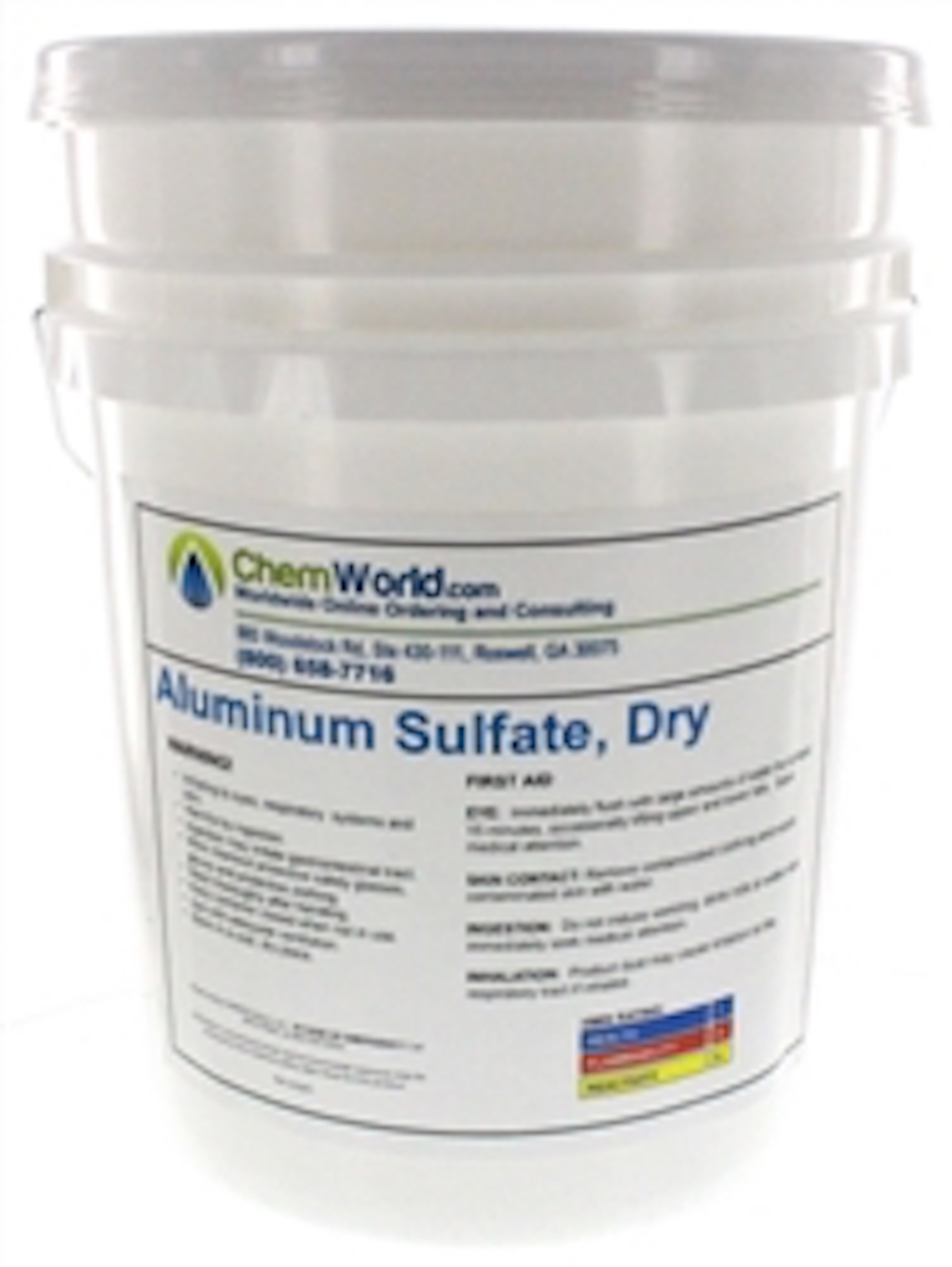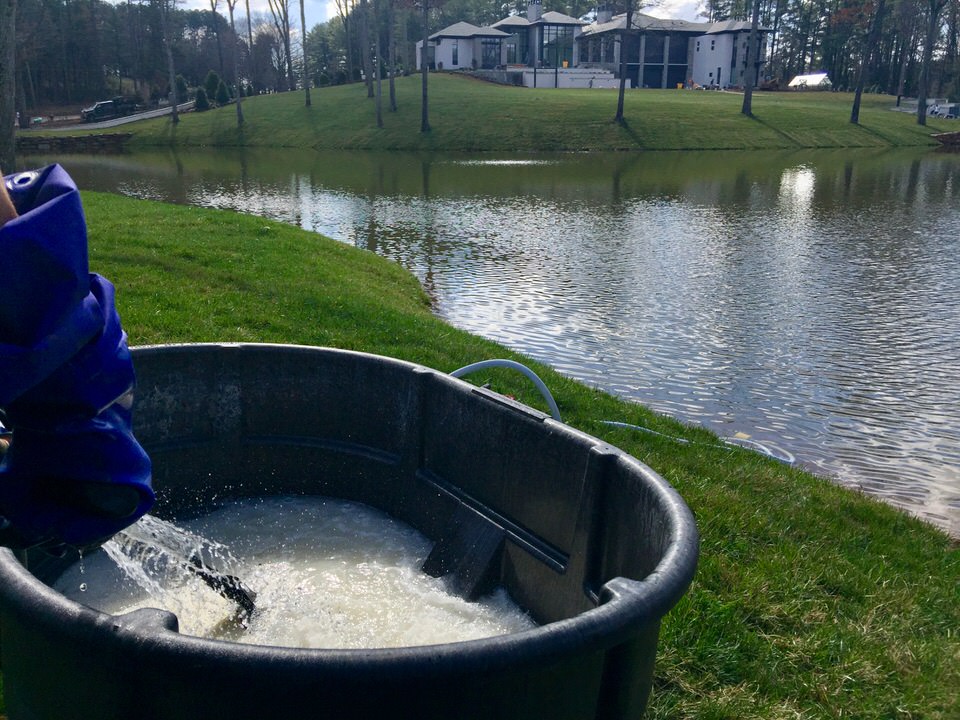 Caleb came to us with a muddy pond. He had tried all the at-home pond management remedies he could find, but the muddy water just kept coming back. (Picture on the right from Chemworld.com)
Caleb came to us with a muddy pond. He had tried all the at-home pond management remedies he could find, but the muddy water just kept coming back. (Picture on the right from Chemworld.com)
Caleb’s pond can be seen by neighbors, so he needed it to look beautiful. Not only that, but he didn’t like the water being too murky to see in since his grandchildren liked to swim. He decided to become a member so his pond would stay healthy & beautiful.
Muddy water can be caused by a few things. Fish and waterfowl (geese and ducks) are the two primary biological causes. Watershed activities are the leading cause of muddy water in ponds. When it rains, nearby soil can runoff into the pond causing it to become muddy. Clay also plays a huge part in muddy ponds for obvious reasons.
Alum is the most effective for clearing clay turbidity (general term for describing the cloudiness or muddiness of water) from a pond. The application is usually a few hundred pounds per surface acre.

When applying Aluminum Sulfate, it’s recommended that the pH is between 6.5 and 8.2. Mixing Alum with water about 8.2 can be toxic to fish. It can be sprinkled as a powder over the water surface, through a waterfall, or through a skimmer intake. Any way you apply it, it needs to be circulated through the pond or lake.
At first, the water will turn a milky white, but within a few hours, the pond should already be clearer than before the treatment. It can be applied about every three days until you get the results wanted.
Caleb asked a great question about Alum and algae. An alum treatment, unfortunately, does not kill algae. In ponds and lakes, it’s used to reduce the amount of the nutrient phosphorus in the water which is a huge food source for algae. Phosphorus enters the water either externally, from run-off or ground water, or internally, from the nutrient-rich sediments on the bottom of the pond or lake.
Aluminum Sulphate is not a short term problem solver; it can last for many years if applied regularly.
SUMMARY
Prevention is the key to keeping a pond beautiful. And for keeping the cost down.
Aluminum Sulfate is the most effective material for clearing clay turbidity from a pond.
An alum treatment can last 10-15 years or even longer, depending on the level of external phosphorus entering the pond. The less phosphorus that enters the pond from external sources, the more effective the treatment.
Alum reduces the growth of filamentous algae by trapping the nutrient phosphorus - algae’s food source - in sediments.
Phosphorus enters the pond externally, by run-off or ground water, or internally, by the nutrient-rich sediments on the floor of the pond or lake.
On contact with water, alum becomes aluminum hydroxide (the principal ingredient in common antacids such as Maalox). This fluffy substance, called a floc, settles to the bottom of the pond.
Now serving Greenville SC, Spartanburg SC, Asheville NC, & Charlotte NC areas.
Get started. And become a member today!
Not in our service area? Schedule a 30 min phone consultation for only $99 anywhere outside of our service area in the U.S.A.




